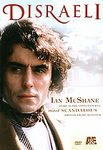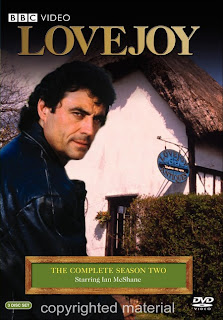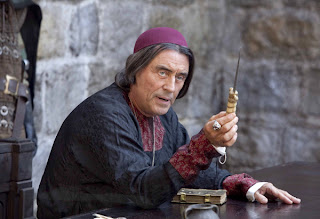
Oh, boy – London
and liquor? Sign me up! London Cocktail Week is a new concept happening across London this year to celebrate the capital of cocktail culture. Seminars, cocktail classes, bar tours and parties will be hosted throughout the week for cocktail enthusiasts and professionals alike. Selfridges has confirmed as the central hub for all information during London Cocktail Week and the event headquarters will be located within Gordons Bar on the first floor. Events begin every day at 9 a.m. with various venues offering full English breakfasts and Grey Goose Bloody Marys (
are there any other kind!?). In addition, 50 of the City’s finest bars will offer £4 discounted cocktails to those who sign up online to receive LCW wristbands. And, from Monday to Friday, 6 p.m. – midnight there will be special LCW buses to take you home (
brilliant!). Check out the
event website for more details. AND, the
UK Rumfest will be happening simultaneously at London’s Olympia Hotel October 16-17th. There’ll be over 400 rums to sample and buy, cocktail demonstrations and live music including salsa, soca, reggae, zouk and samba. Over two days, visitors to the festival will be able to explore rums from countries such as Antigua, Barbados, Mauritius and Venezula as well as meet master blenders, discover the secrets of rum-based cocktails (
I can’t stand it!).
In order to redeem myself and justify this post which, thus far, has been solely about lapping up liquor, I’ll throw in some useful historic cocktail facts –
1730 – There were over 7,000 gin shops in London.
1798 – Supposedly, the word “cocktail” first appeared in the English language in a London newspaper. No doubt this referred to those drinks into which were plunged the tail of a cock. Read the story at
The Straight Dope for all possibilities for the origin of the word. Or try this article at the
Art of Drink which references early newspaper mentions of the word.
1803 – The earliest known printed use of the word cocktail was in The Farmer’s Cabinet on April 28, 1803
1806 – The earliest definition of a cocktail appeared in the May 13, 1806 edition of the Balance and Columbian Repository, a publication in Hudson, New York.
1840’s – James Pimm, owner of a London oyster bar, invents the Pimm’s Cup using gin, quinine and a secret mixture of herbs. It was served in a small tankard as an aid to digestion (nudge, nudge) and known as a No. 1 Cup. After the Second World War, Pimms extended their range, using a number of other spirits as bases for new cups. Scotch lent its name to No. 2 cup while No. 3 used brandy, No. 4 rum, No. 5 rye and No. 6 vodka. Of these sequels, the vodka cup and brandy (now called Winter) are the only ones in production while original No. 1 cup still reigns supreme in popularity. To make a traditional Pimms No.1, take one slice of orange, lemon, apple and cucumber per person and one sprig of mint and add to two parts lemonade to one part Pimms.
1898 – The American Bar at the Savoy Hotel opens and introduces the concept of the “cocktail” as we know it today to London.
1919 – The classic Savoy Cocktail is introduced at the Savoy Hotel. Harry Craddock was the legendary bartender who came up with the drink. The following recipe makes one drink, served straight up in a cocktail glass, but the drink can also be served in a sours glass on the rocks, as long as you add a little bit of club soda right before serving:
Fill a cocktail shaker half-full with ice cubes. Add 1 ½ oz. dry gin, ¾ oz. French vermouth, ½ oz. absinthe and a dash of grenadine syrup to the cocktail shaker. Cover the cocktail shaker and shake gently for 10 to 15 seconds. Shaking too hard will bruise the gin, resulting in an unpleasantly strong juniper berry flavor. Strain the contents of the cocktail shaker into a chilled cocktail glass. Drop a maraschino cherry into the drink and garnish the glass with a fresh lemon peel.
1922 – MacGarry, a popular bartender at Buck’s Club, invents the Sidecar: Take 2 oz brandy, 1/2 oz Cointreau, 1/2 oz fresh lemon juice and shake with ice, and then strain into a cocktail glass.
1933 – Arthur Tarling, bartender at London’s Café Royal won first prize in a London cocktail competition with his recipe for a Red Lion cocktail – Take 1 ounce London dry gin, 1 ounce Grand Marnier, 1/2 ounce orange juice and 1/2 ounce lemon juice. Shake well with cracked ice, then strain into a chilled cocktail glass whose rim has been rubbed with lemon juice and dipped in sugar.
1952 (or thereabouts) – Author Ian Fleming has a martini at Dukes Bar and is inspired to write that immortal James Bond martini direction, “Shaken not stirred.” By the way, at Duke’s Bar, a small wooden trolley is wheeled out and parked beside your table while your waiter prepares your martini for you.
2007 –
The Movida nightclub, a London hangout of celebrities, footballers and the super-rich offered patrons a Flawless cocktail consisting of a large measure of Louis XII cognac, half a bottle of Cristal Rose champagne, some brown sugar, angostura bitters, a few flakes of 24-carat edible gold leaf – and an 11-carat diamond ring at the bottom of the glass. Among the first to order the drink was Max Reigns, 28, a property developer and manager who gave the ring, and the cocktail, to his girlfriend for Christmas.

2010 – The Connaught Hotel introduces the Martini Trolley in its bar. Yeah, yeah, Dukes has had a martini trolley for yonks, but this one is different. At the Connaught, the trolley features an engraved Japanese crystal mixing jar which has been cleverly engineered to conserve freezing temperatures. Double frozen ice cubes from purified water ensure the martini is chilled to perfection. The stirring utensils are made of silver, while the martinis themselves are served in elegant engraved crystal glasses especially designed for the Connaught Bar by leading French designer Jean Jacques. They also offer seven flavors of bitters, including extracts of lavender, coriander, cardamom, ginger, grapefruit, licorice and vanilla.
2010 – A new, underground, 1920’s speakeasy-type bar called
Purl opens in Marylebone, where gloved bartenders serve up martinis made using liquid nitrogen.
2010 – Brooke Hughes travels to London, where she visits the
Absolut Ice Bar with friends. Everything inside is made from blocks of ice and temperatures hover at 5 degrees. Farenheit. You’re issued a protective suit upon entry and can only stay for a maximum of forty minutes. Drink fast.
Seeing as how the American Bar at the Savoy Hotel has played such a large part in London’s cocktail lore, I’ll have to sashay myself down there when I’m in London in December and hoist a Cuba Libre (with Appleton’s rum, if you please) to London drinkers past and present.
Honestly, the things I do for the sake of this blog . . . . . .



























